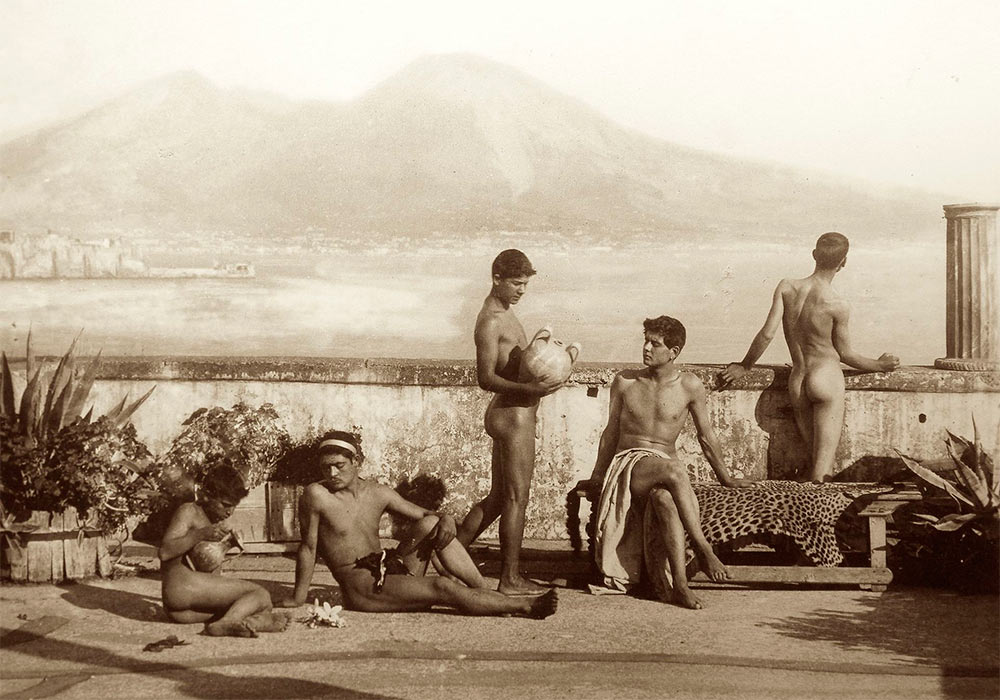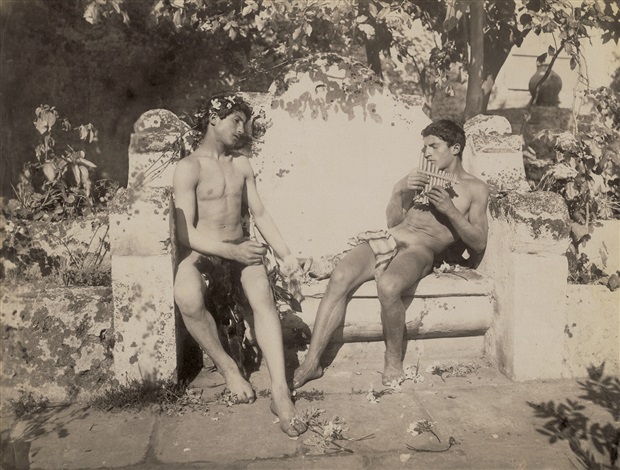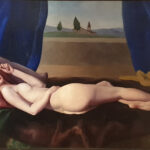Art, in its purest form, has always had the power to evoke emotions, spark debates, and sometimes, disrupt the existing order. Wilhelm von Gloeden, a German photographer active between the late 19th and early 20th centuries, epitomizes this evocative power. Best known for his photographs of nude or semi-nude Sicilian youths, often set against picturesque ruins or bucolic landscapes, Gloeden wove art and scandal into an inseparable bond.
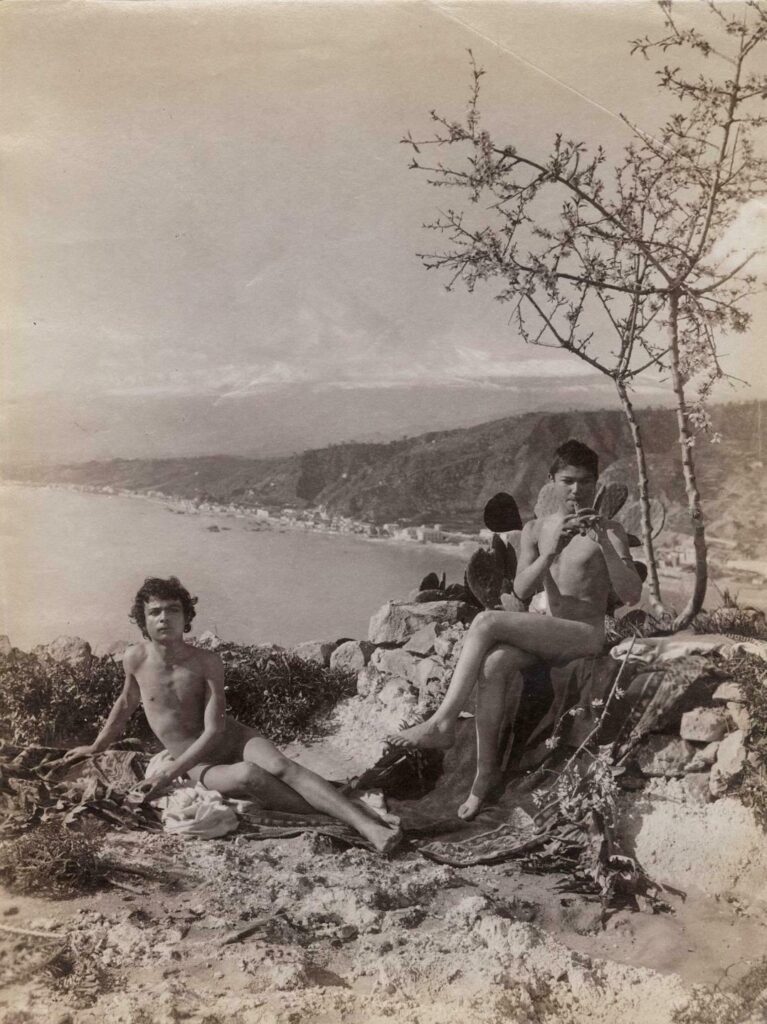
Nudes and the Revival of the Greek Myth: Gloeden's Aesthetic Revolution
Sicily, particularly Taormina, has always been a melting pot of cultures, a place where Greek, Roman, and Arab influences have blended over the centuries. This cultural and historical diversity is reflected in its landscapes, architecture, and the traditions of its people. Wilhelm von Gloeden, with a particular artistic sensitivity, managed to capture this essence through his photography.
- Taormina: The Ancient Scene of Modern Greece
The allure of Taormina lies not only in its natural beauty but also in its rich historical heritage. The ancient Greek ruins, with the theater overlooking the sea, offer a panoramic view that seems directly connected to a mythical past. Gloeden, through his lens, did not merely document these ruins; he reanimated the grandeur of Greek culture, merging the ancient with the modern.
- The Models: Adonis and Apollo in the Contemporary World
The Sicilian youths, with their natural and timeless beauty, became for Gloeden the protagonists of this return to myth. They embody the vitality, passion, and innocence of the Greek gods. This choice was not random. By dressing them in togas or drapes reminiscent of ancient Greek attire, or presenting them in classical poses, Gloeden not only celebrated male beauty but established a dialogue between the past and present, suggesting a continuity in the beauty and identity of Sicily.
- The Provocation of Nudity
In 19th-century Europe, the image of the naked body was often reserved for academic or artistic contexts, such as painting or sculpture. Nude photography, especially of males, was still largely uncharted and certainly bold territory. Gloeden, in this context, revolutionized the art of photography. He did not just show nudity: he celebrated it, he mythologized it. And in doing so, he challenged the social norms of the time, particularly the oppressive Victorian morality, which saw such representations as indecent or even immoral.
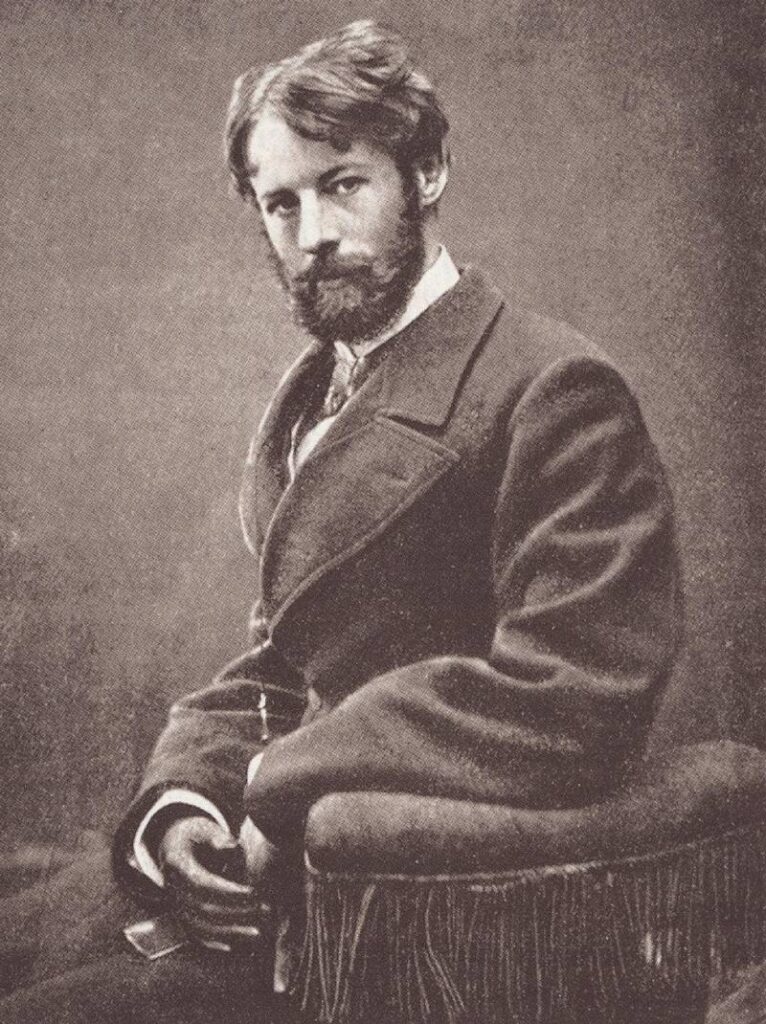
Gloeden’s photographs are much more than mere images. They are declarations of love for Sicily, its history, and its people. Through his work, Gloeden rediscovered and reanimated a mythical past, indissolubly linking it to the present. And in this bold bridge across centuries, he also paved the way for a new way of seeing and representing the human body in art.
This idealized use of nudity, which at the time was radically innovative, was not just an aesthetic exploration. It was also a provocation. Gloeden dared to show the beauty of the male body in an era when Victorian morality was dominant, and explicit representations were almost always scandalous.
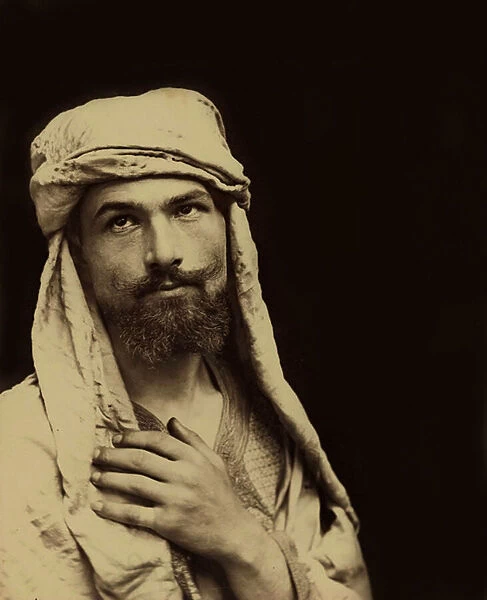
Beyond Aesthetics: Gloeden's Implicit Act of Rebellion
Art has always been a powerful weapon of expression, a vehicle through which artists communicate their visions, hopes, and anxieties. However, few have used photography like Wilhelm von Gloeden to challenge social conventions and norms of their time. While his works might seem at first glance mere celebrations of human beauty and the Sicilian landscape, they enclose a much deeper and provocative message.
- The Social Context of 19th Century Europe
Late 19th-century Europe was marked by a fervor for change and progress, but also by deep social divisions and strong prejudices. Homosexuality, in particular, was taboo. In many countries, like England, it was a crime punishable by imprisonment. Discrimination and persecution were commonplace, and the open expression of LGBTQ+ identity was risky and potentially dangerous.
- Gloeden’s Works as Rebellion
In this oppressive environment, Gloeden’s photographs emerged as a bold counterpoint. His portraits were not just of young men in classical poses; they were images laden with meaning. The celebration of male beauty, the delicacy of interactions among his subjects, and the palpable sensuality that pervaded many of his works were bold challenges to the norms of the time.
These images were not just a homage to male beauty; they were a rejection of the repression and stigmatization of homosexuality. Through his lens, Gloeden seemed to say that beauty and love know no gender or orientation, and that the essence of humanity lies in its diversity.
- From Rebellion to Affirmation
Beyond the simple challenge to social norms, there was also a message of hope and affirmation in Gloeden’s works. In an era when the LGBTQ+ community was often relegated to the shadows, his photographs offered a vision of dignity, pride, and acceptance. Without uttering words, Gloeden was proclaiming that love and beauty were universal, transcending the boundaries of sexual orientation.
Wilhelm von Gloeden’s works, in addition to being a celebration of aesthetics, were profound political statements. Even if not explicitly activist in his approach, through his art, Gloeden challenged conventions and gave voice to a community often silenced. His legacy is not just that of a talented photographer but also of a pioneer in the fight for acceptance and LGBTQ+ rights.
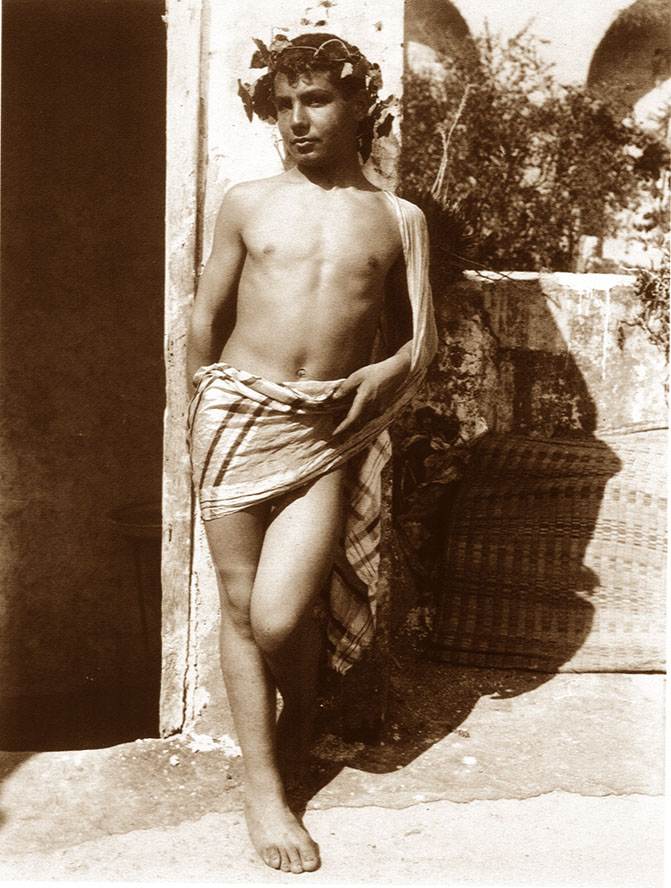
Exoticization in Gloeden's Work: Authenticity Versus Theatricality
The lens through which an artist views the world is inevitably filtered by their own experiences, preconceptions, and sometimes, the desires of their audience. Wilhelm von Gloeden, despite his evident talent and ability to capture the natural and cultural beauty of Sicily, did not escape accusations of having manipulated and oversimplified the image of the region and its inhabitants.
- Exoticization: A Romantic Vision of Sicily
The notion of exoticization concerns the act of representing a culture or people in a way that appears foreign, fascinating, or “other” in relation to one’s own culture. In Gloeden’s works, Sicily is often presented as a timeless place, an island of myths and legends where modernity has yet to find a foothold.
Many critics pointed out that, through his lens, Sicily seemed more a landscape of ancient Greece than a vibrant and throbbing region of contemporary Italy. This representation, while fascinating, risked denying the complexity and richness of Sicilian culture.
- The Subjects: Between Authenticity and Caricature
The choice of Gloeden’s models and their representation have been at the center of much criticism. Although his subjects were real Sicilians, the way they were presented – often semi-nude, adorned with simple drapes, or positioned amidst ancient ruins – created an extremely romanticized and theatrical image of the Sicilian people.
The main issue was whether Gloeden was simply celebrating the beauty of his models and the Sicilian landscape or whether, in doing so, he was creating an idealized and simplified version of Sicily, more suited to satisfying the fantasies of his bourgeois viewers rather than authentically representing the region’s reality.
- Tension between Artistic Vision and Realism
While some see in Gloeden’s works a deep appreciation for Sicily and its inhabitants, others perceive a certain superficiality, where the artist has sidelined reality in favor of a more commercial and appealing vision. This tension between the authenticity sought by Gloeden and the theatricality of his compositions has fueled debates about his legacy and his interpretation of Sicily and its people.
Wilhelm von Gloeden, like many artists before and after him, found himself navigating between his personal vision and the expectations of his audience. While his works remain extraordinary testimonies of talent and passion, the criticisms regarding his potential exoticization of Sicily raise important questions about the role of the artist in representing cultures and people, and how these representations influence public perception.
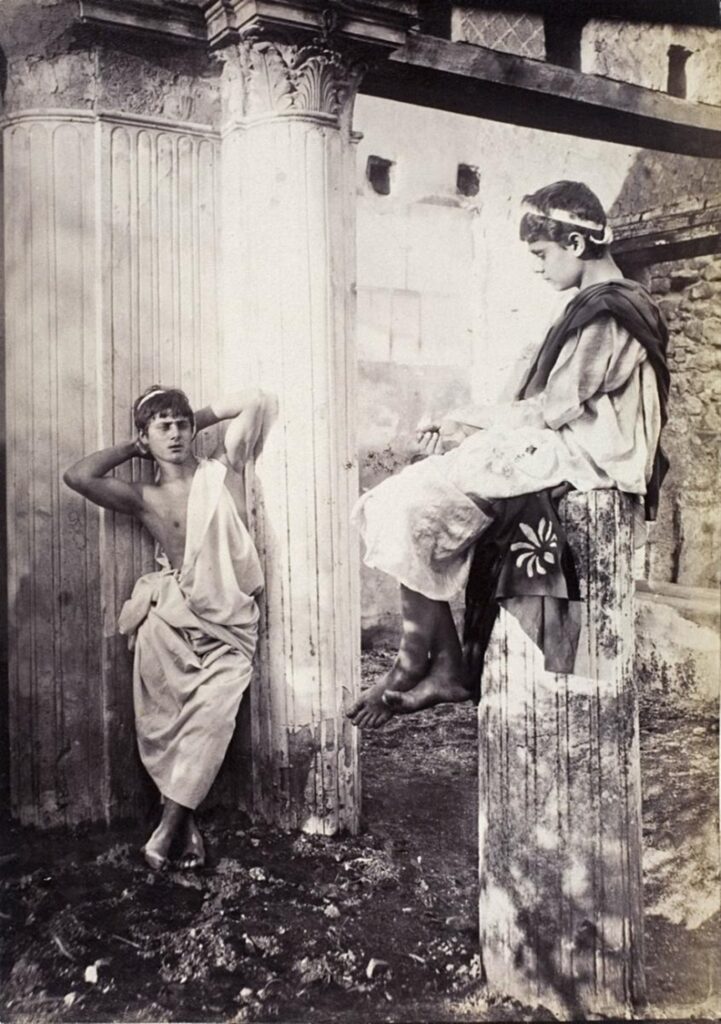
Conclusion
The works of Wilhelm von Gloeden represent a point of conflict in photographic art. While his technical skill and vision were unquestionable, the tensions between reality and idealization, between authenticity and exoticization, make his photographs the subject of incessant debate. What is indisputable is that, through his lens, Gloeden gave voice to a part of society often silenced and challenged the social norms of the time, making his works as powerful as they are controversial.
